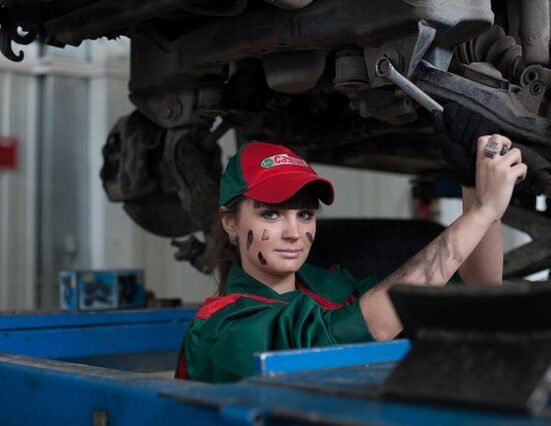Welcome to our comprehensive guide on turning discarded items into beautiful and functional pieces for the modern Indian urbanite. In a world where waste management is a growing concern, it’s essential to embrace upcycling and recycling as a way of life. From repurposing old furniture to creating decorative items out of everyday household waste, we’ll cover it all. Join us as we take you on a journey to transform trash into treasures for your home and lifestyle.
Table of Contents
Key Takeaways:
- Upcycling Opportunities: There are numerous opportunities for Indian urbanites to upcycle items such as old clothes, furniture, and containers into useful and creative products.
- Environmental Impact: By engaging in DIY recycling and upcycling, individuals can reduce the amount of waste that ends up in landfills, leading to a positive impact on the environment.
- Creative Expression: DIY recycling and upcycling allow urbanites to express their creativity and experiment with different ways to transform trash into treasure, adding a personal touch to their living spaces.
Types of Materials for Recycling and Upcycling
Obviously, when it comes to recycling and upcycling, there are a wide variety of materials that can be utilized. It’s important to understand the different types of materials available for reusing and repurposing in order to make the most of our resources.
| Common Household Waste Items | Uncommon Upcycling Candidates |
| Plastic bottles | Broken electronics |
| Newspapers | Old clothing |
| Glass jars | Empty tin cans |
| Cardboard | Wood scraps |
| Metal cans | Discarded furniture |
Common Household Waste Items
For the average urbanite, common household waste items are readily available for recycling and upcycling. Plastic bottles, newspapers, glass jars, cardboard, and metal cans are just a few examples of materials that can be repurposed into useful and innovative creations. By thinking outside the box, these items can be transformed from trash to treasure, reducing waste and promoting sustainability.
Uncommon Upcycling Candidates
The world of upcycling also includes some uncommon candidates that one might not typically consider for reuse. Broken electronics, old clothing, empty tin cans, wood scraps, and discarded furniture can all be given a new lease on life through creative and imaginative upcycling projects. These items may seem like trash at first glance, but with a little creativity, they can be transformed into something valuable and unique.
Waste should not always be seen as something to be discarded. By identifying unexpected upcycling candidates, we can expand the possibilities for creatively reducing and repurposing materials that might otherwise end up in a landfill. With a bit of imagination, even the most unlikely of materials can be given a second chance at usefulness and beauty.
Tips for Effective Recycling
Any effort towards recycling and upcycling begins with effective waste management. Here are some tips to help you effectively reduce, reuse, and recycle your household waste:
- Separate your waste into categories such as plastic, paper, glass, and organic materials
- Label your recycling bins for easy sorting
- Research local recycling programs to understand what materials are accepted
- Find creative ways to reuse items before throwing them away
Assume that every item has the potential to be recycled or upcycled in some way, and make a conscious effort to do so.
Sorting Your Waste Efficiently
Effective waste management begins with sorting your waste efficiently. Separate your waste into categories such as plastic, paper, glass, and organic materials. Label your recycling bins for easy sorting and make sure to rinse out any containers before disposing of them. By sorting your waste efficiently, you can ensure that it is ready for the recycling process and reduce contamination.
Staying Informed on Local Recycling Programs
Staying informed on local recycling programs is crucial for effective waste management. Research what materials are accepted by your local recycling facilities and find out where your nearest drop-off locations are. Familiarize yourself with the regulations and guidelines for recycling in your area to ensure that you are recycling responsibly and in accordance with local laws.
For instance, some areas have specific programs for e-waste recycling or composting, so staying informed on these initiatives can help you make a positive impact on the environment.
Step-by-Step Upcycling Projects
For those looking to get hands-on with upcycling, there are plenty of projects that can turn your trash into treasure. Whether it’s creating new items from old plastic bottles or giving scrap fabrics a new lease on life, there’s no shortage of ideas to get your creative juices flowing. If you’re ready to roll up your sleeves and get to work, check out our curated list of 30 Best DIY Upcycled Trash-to-Treasure Ideas on Pinterest for some inspiration.
Making Planters from Old Plastic Bottles
Upcycling old plastic bottles into planters is a great way to give your green thumb a new outlet. Start by cutting the bottle in half, then punch holes in the bottom for drainage. Add some soil and your choice of plant, and voila! You’ve created a simple and effective planter from what would have been trash.
Looking to take it a step further? Get creative with paint or decoupage to add some flair to your new planters. Upcycling old plastic bottles into planters not only helps reduce plastic waste, but also adds a unique touch to your home or garden decor.
Creating Home Decor from Scrap Fabrics
Planters aren’t the only thing you can create from discarded materials. Upcycling scrap fabrics into home decor items like throw pillows, quilts, or even wall hangings is a fun and sustainable way to spruce up your living space. Looking to add a pop of color to your home? Get crafty with some old fabric scraps and see what new creations you can come up with.
The possibilities are endless when it comes to creating home decor from scrap fabrics. Whether you’re looking to add a personal touch to your space or reduce textile waste, this is a project that can yield beautiful and positive results.
Factors to Consider Before Starting Your Project
Your project may seem exciting, but there are a few important factors to consider before you dive in. Here are some key points to keep in mind:
- Time: How much time can you dedicate to the project?
- Skill Level: What level of expertise do you have in DIY recycling and upcycling?
- Resources: Do you have all the necessary materials and tools?
- Space: Do you have enough space to work on the project?
Assume that TRASH TO TREASURE (upcycle projects) may require more time and skill than you initially thought, so be realistic about your capabilities and resources.
Time and Skill Level Requirements
Consider the amount of time and skill level required for your recycling or upcycling project. Some projects may require more expertise and time than others. Additionally, certain techniques may require a higher skill level to execute successfully.
Safety and Environmental Considerations
With any DIY recycling or upcycling project, it’s crucial to prioritize safety and environmental considerations. Be sure to research and understand the potential hazards associated with the materials and techniques you’ll be using. Additionally, consider the environmental impact of your project and strive to minimize any negative effects.
Level of experience and understanding of safety and environmental considerations are essential for successfully executing DIY recycling and upcycling projects. Be mindful of hazardous materials and implement proper disposal methods to minimize environmental impact.
Pros and Cons of DIY Recycling and Upcycling
Now, let’s take a closer look at the pros and cons of DIY recycling and upcycling. It’s important to weigh both the benefits and potential challenges before diving into these creative practices.
| Pros | Cons |
| Environmentally friendly | Time-consuming |
| Creative outlet | Requires storage space for materials |
| Cost-effective | Initial investment in tools and supplies |
| Reduces waste in landfills | Not all projects turn out as planned |
| Promotes sustainability | Can be physically demanding |
| Customizable and unique | May require research and learning new skills |
| Empowers individuals to make a difference | Can be challenging to find appropriate materials |
Benefits of Upcycling for the Environment and Society
The practice of upcycling holds numerous benefits for both the environment and society. Upcycling significantly reduces the amount of waste that ends up in landfills by reusing materials that would otherwise be discarded. This contributes to a sustainable and eco-friendly society, while also inspiring individuals to rethink their consumption habits and prioritize reusing and repurposing over throwing away.
Potential Challenges and How to Overcome Them
Environmentally conscious practices such as DIY recycling and upcycling are not without their challenges. However, these challenges can be overcome with careful planning and creativity. One of the main challenges is the time and effort required for each project, but this can be managed by setting realistic goals and breaking down larger projects into smaller, manageable tasks.
Potential challenges also include, but are not limited to, the initial investment in tools and supplies, the physical demands of DIY projects, and the difficulty in finding appropriate materials. However, with proper research, resourcefulness, and a positive mindset, these challenges can be mitigated to ensure a smooth and rewarding DIY recycling and upcycling experience.
From Trash to Treasure – DIY Recycling and Upcycling Ideas for the Indian Urbanite
From above ideas, it is evident that there are numerous creative ways to turn trash into treasure through DIY recycling and upcycling. By repurposing items that would otherwise be discarded, urban dwellers in India can not only reduce their environmental impact but also create unique and beautiful pieces for their homes. Whether it’s turning old bottles into decorative vases or transforming wooden pallets into furniture, the possibilities are endless. For more inspiration, check out the 30 Best DIY Upcycled Trash-to-Treasure Ideas on Pinterest and start turning your trash into treasure today!
FAQ
Q: What is upcycling and how is it different from recycling?
A: Upcycling is the process of transforming waste materials or useless products into new materials or products of better quality or for better environmental value. Recycling, on the other hand, involves breaking down used materials and reusing them to make new products. Upcycling focuses on upgrading the value of the material, while recycling focuses on reusing the material in some form.
Q: How can I start upcycling at home?
A: To start upcycling at home, you can begin by collecting and saving items that you would normally throw away, such as glass jars, tin cans, and old clothing. Then, get creative with how you can repurpose these items for new uses. For example, you can turn old t-shirts into cleaning rags, or transform glass jars into decorative vases or storage containers. There are numerous DIY upcycling ideas available online to help inspire your creativity.
Q: What are some benefits of upcycling for the environment and the community?
A: Upcycling helps reduce waste and lessen the burden on landfills. By repurposing items, we can decrease the need for new raw materials, which in turn helps conserve natural resources and energy. Upcycling can also have positive social and economic impacts by creating new opportunities for entrepreneurship and employment in local communities. Additionally, upcycling can foster a sense of creativity and innovation, as well as a greater awareness of sustainable living practices.






